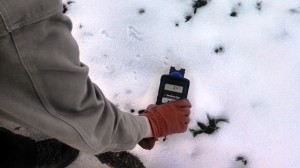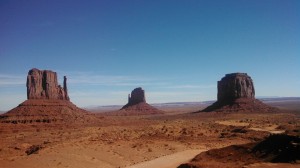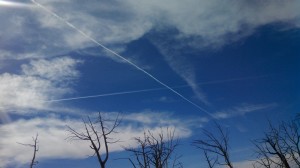 A thirteen state EnviroReporter.com road trip through the West and Midwest of the United States this fall revealed a lower fallout rate of suspected Fukushima than anticipated. Dozens of tests of food, rain and snow showed heightened radiation readings in Utah, Colorado and southwest Michigan.
A thirteen state EnviroReporter.com road trip through the West and Midwest of the United States this fall revealed a lower fallout rate of suspected Fukushima than anticipated. Dozens of tests of food, rain and snow showed heightened radiation readings in Utah, Colorado and southwest Michigan.
Rain in Richfield, Utah, registered 72.7% above background October 25. The sample was taken after several hours of precipitation to ensure radon progeny did not affect the readings. The rain and snow, which helped take the edge off of a severe drought, stretched across three states traversed – Utah, Colorado and Nebraska – bringing showers to Grand Junction, Colorado that were a mere 21.9% above normal.
A surprisingly strong snowstorm blanketed the Rockies and the Denver metropolitan region with several inches that tested at background. Snow in eastern Colorado was also coming in normal as this EnviroReporter.com video shows.
 Unlike rain, however, the amount of cesium-137, cesium-134 and strontium-90 – three of the most prevalent radionuclides that have escaped from the triple Fukushima meltdowns – bioaccumulate and break down slowly depending on half-life. The last year alone saw detections of Fukushima-related radiation in California oranges, dried prunes, almonds and pistachios.
Unlike rain, however, the amount of cesium-137, cesium-134 and strontium-90 – three of the most prevalent radionuclides that have escaped from the triple Fukushima meltdowns – bioaccumulate and break down slowly depending on half-life. The last year alone saw detections of Fukushima-related radiation in California oranges, dried prunes, almonds and pistachios.
Armed with this knowledge, and an Inspector Alert nuclear radiation monitor, we avoided foods known to be impacted by Fukushima radiation and continued our blanket ban on eating anything out of the Pacific. As such, timed counts testing suspect foods weren’t necessary as we weren’t going to purchase the hot products in the first place.
Despite consistently elevated readings in spot checks of Pacific-caught or bred tuna in grocery stores or home kitchens, most food items of the several hundred we spot testes were registering at background. While the sample set was small and biased towards foods not suspected of being impacted, the lack of hot samples was encouraging.
 What wasn’t encouraging was the extensive chemtrail activity over several states, Missouri, Kansas, Colorado and Arizona in particular. As shown in No Place to Hide, these aerosols – whatever they are made of and for whatever covert reason they are being sprayed – are “scavenging” Fukushima radionuclides in the troposphere and providing a precipitation-free mechanism to bring these isotopes down in the atmosphere.
What wasn’t encouraging was the extensive chemtrail activity over several states, Missouri, Kansas, Colorado and Arizona in particular. As shown in No Place to Hide, these aerosols – whatever they are made of and for whatever covert reason they are being sprayed – are “scavenging” Fukushima radionuclides in the troposphere and providing a precipitation-free mechanism to bring these isotopes down in the atmosphere.
This impacts the environment below including flora, fauna and, of course, human beings not suspecting fallout in otherwise clear dry skies. The fallout lands in dry environments and can be repeatedly resuspended in the air from wind-blown dust and other meteorological phenomena.












“…this fall revealed a lower fallout rate of suspected Fukushima than anticipated.” – from article
Of course if the testing were done by the EPA or other government agency they would have anticipated NO fallout at all.
(or what they call – non-detectable or of no concern)
Then, these findings would be considered ‘higher’ than anticipated ‘IF’ the EPA were actually doing any testing.
I do understand what you mean when you say lower than anticipated. I feel it is significant and alarming though that any detections were found at all.
Because of the ongoing Fuku disaster I am instructing everyone growing outside of a greenouse to mix zeolite into their garden soil before planting to absorb the precipitating radionuclide particles.
Then sprinkle more on the top of the soil after planting.
To buy zeolite out west, go to the horse feed store where it’s sold under the name Sweet PDZ.
Out east go to the pool supply store and buy ZEOSAND in the 25 pound bag.